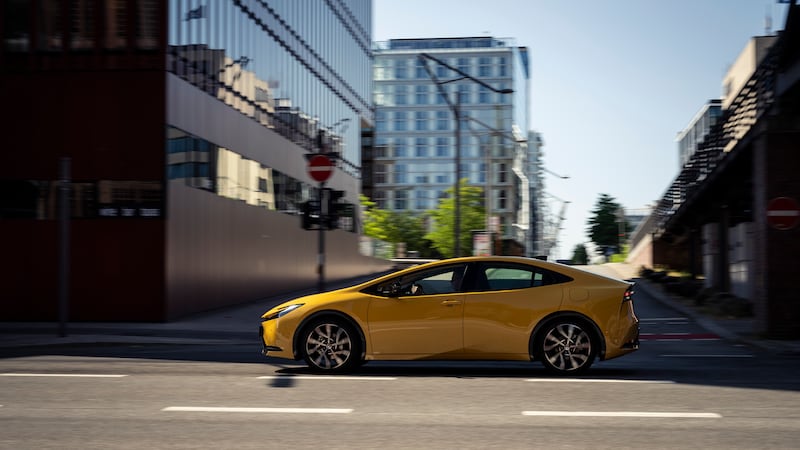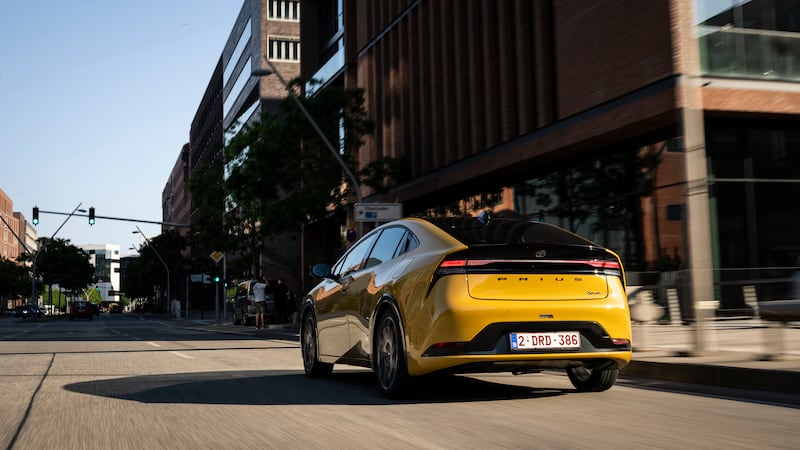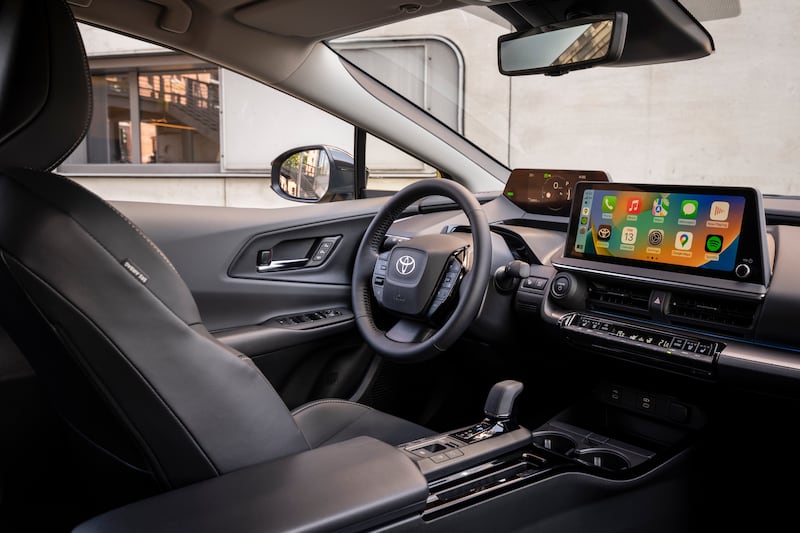Toyota’s new Prius is a revelation for one simple reason: it’s a great-looking car. Truly we never expected to ever say that about the original mass-market hybrid car.
It took 25 years to evolve from oddball eco warrior to sleek family coupe, but that just makes this fifth-generation version even more impressive. Suddenly it’s a car that will attract buyers who would have previously dismissed the Prius as a pretentious eco showboating car.
Of course, the Prius name is wedded to its reputation as a petrol-electric hybrid pioneer, but for the first time this family car has more going for it than its eco credentials.

That said, those credentials are well-earned. Prius has flown the flag for hybrid from 1997, but it wasn’t until the turn of the last decade that the hybrid format really became mainstream, largely down to Toyota’s decision to abandon diesel engines in its mainstream passenger car models.
READ MORE
These days virtually every brand offers some form of hybrid, and Toyota, the evangelist for adding battery power, has seemed slow to adapt to the wider adoption of plug-in power in the form of PHEVs and fully-electric models.
The Prius is no longer the poster car for environmentalists – that honour falls upon full-EVs these days – but it has a lot more going for it as a mainstream motoring choice. Alongside its good looks, the new Prius will be sold in Ireland only as a plug-in hybrid, boasting a fully-electric range of 86km on a single charge of its 13.6kWh battery pack, with CO2 emissions of just 11g/km.
This is not the first Prius to be offered as a PHEV – Toyota initially introduced this format to the range back in 2012 – but it’s the first time the Japanese have adopted it with such enthusiasm. In the past, its engineers remained unconvinced of the benefits of the PHEV format, given that it required a much bigger battery pack than the regular hybrid, which was then dead weight for the car to haul around once the battery was empty.

Improvements in battery tech and the EV range have convinced them that it’s now a viable option for European buyers, so the regular hybrid will no longer be an option.
Our test drive proved the 86km in full EV mode to be a realistic target, and the car runs as a full EV during this time up to speeds of 130km/h.
When you’ve used up the battery charge from the plug-in power, the Toyota reverts to regular hybrid mode, with recuperated power feeding into the battery to support the 2-litre petrol engine.
There is also a charging mode, where the engine is used to recharge the battery up to a maximum of 80 per cent of its capacity. That’s to ensure you can have enough battery power if needed to drive in an EV-only or low-emissions zone, which are increasingly common in large cities these days. However, this is not going to do your fuel consumption figure any favours, and you are better reverting to a plug socket to get a recharge in the battery. That does take time, as the maximum rate of charge for the Prius battery is just 3.3kW.
While on EV mode, the new Prius is as quiet as any modern electric car; it’s in hybrid driving that this generation shows off its improved refinement compared with earlier iterations. Previous versions of Prius were unpleasant to drive unless you were feather-light on the throttle. Any pressure on the accelerator was met with a cacophony of whining from an underpowered engine and a CVT automatic transmission resistant to anything but slow, sedate driving.
This time there’s an extra 100hp on offer and it ultimately delivers a much smoother – and less noisy – acceleration. That 80 per cent increase in the hybrid systems horsepower compared with the previous generation plug-in version’s 122hp pays off every time you press down on the throttle and it’s a far more refined drive than any previous Prius.
Ultimately the various power options delivers an official WLTP fuel economy figure of just 0.5l/100km, which in old money is a whopping 566mpg (and no, that’s not a typo). Of course, a lot of that depends on your driving style and the route, but the Prius project leader Satoki Oya told The Irish Times he believes they’ve got the recipe of electric battery and petrol power just right.

Put decent EV range together with a refined drive and striking good looks and you can see why Toyota executives are particularly excited about the sales prospects for Prius, even in the face of fully electric rivals.
Those good looks come at a price, however. Interior headroom has been compromised in the rear by the sloping roofline. That will impact on one key Prius demographic to date: taxi drivers. Get someone over 6ft in the back seat and they will be rubbing off the roofline. Six months of that is going to literally leave its mark.
There are also some disappointing features, like the low-grade light meal of the filling cap and plug socket doors, plus the great swathes of hard plastics still lining the doors and the top of the dash. For €45,900 you’d rightly have hoped for a little more premium finish, particularly considering that a year ago a Prius (albeit non-plug-in) would have set you back just €31,450.
Perhaps some long-time Prius patrons will be put off by the lower roofline and higher price, but thanks to a far more refined drive and great looks, the wider appeal of Prius has never been stronger.













